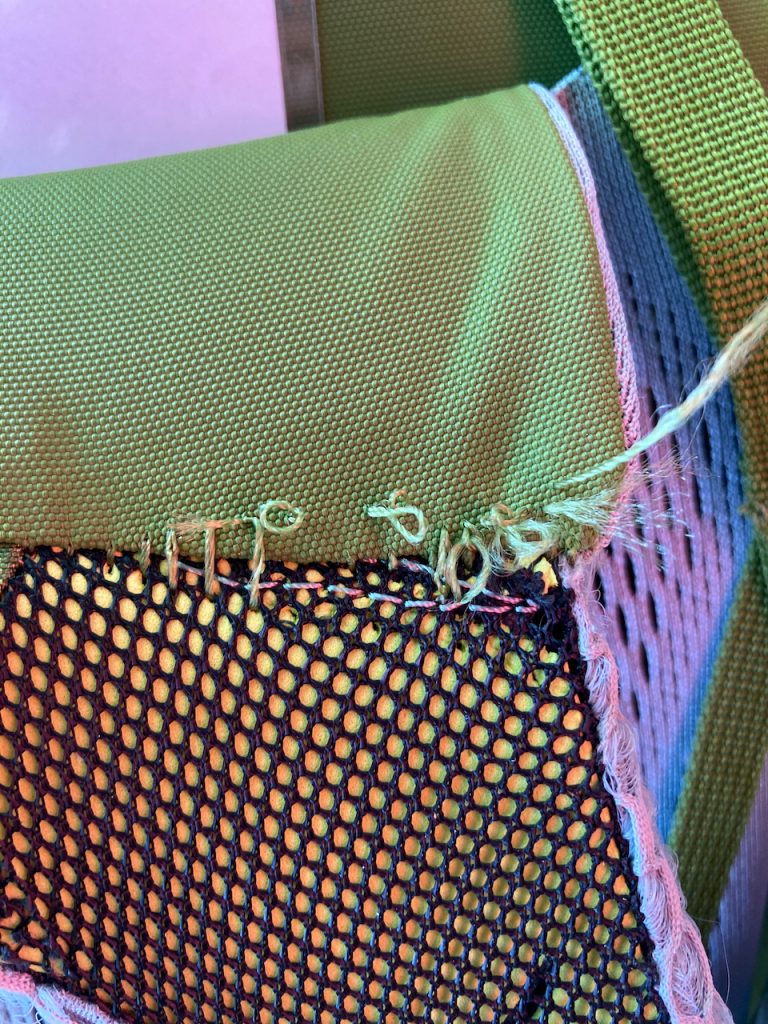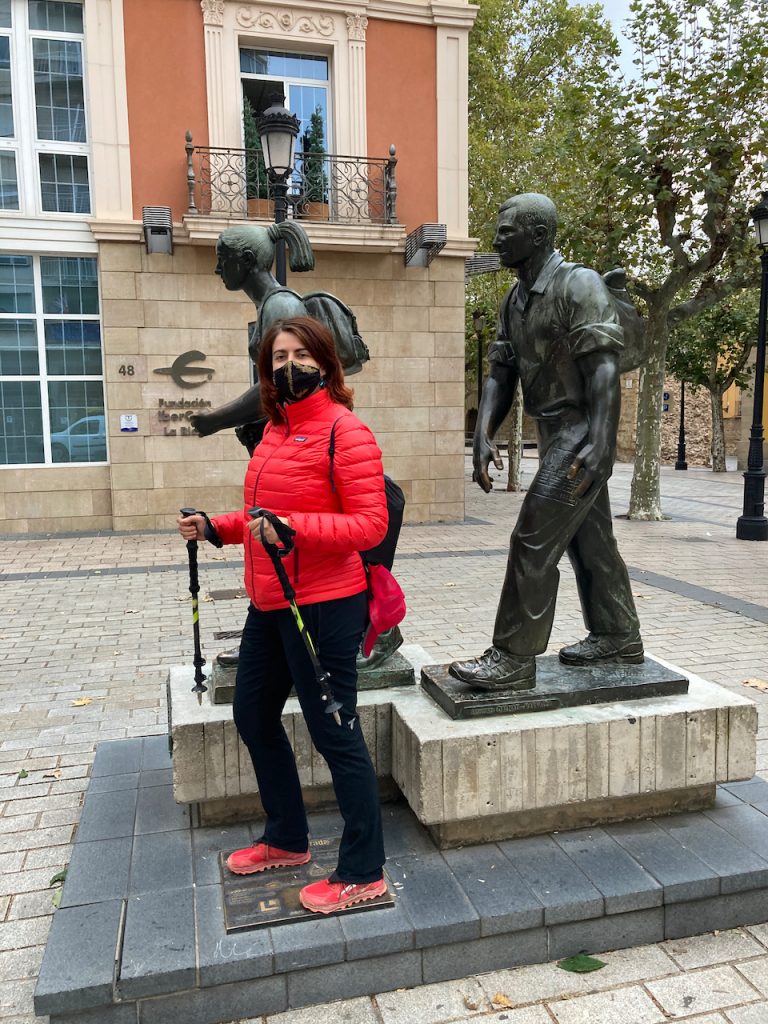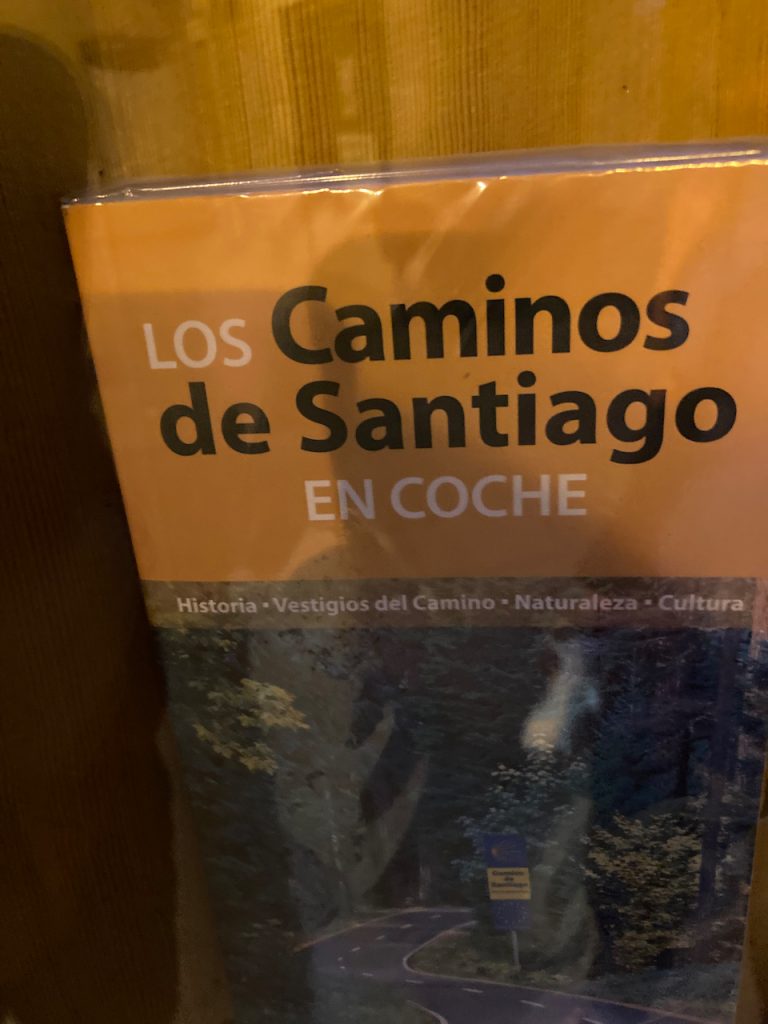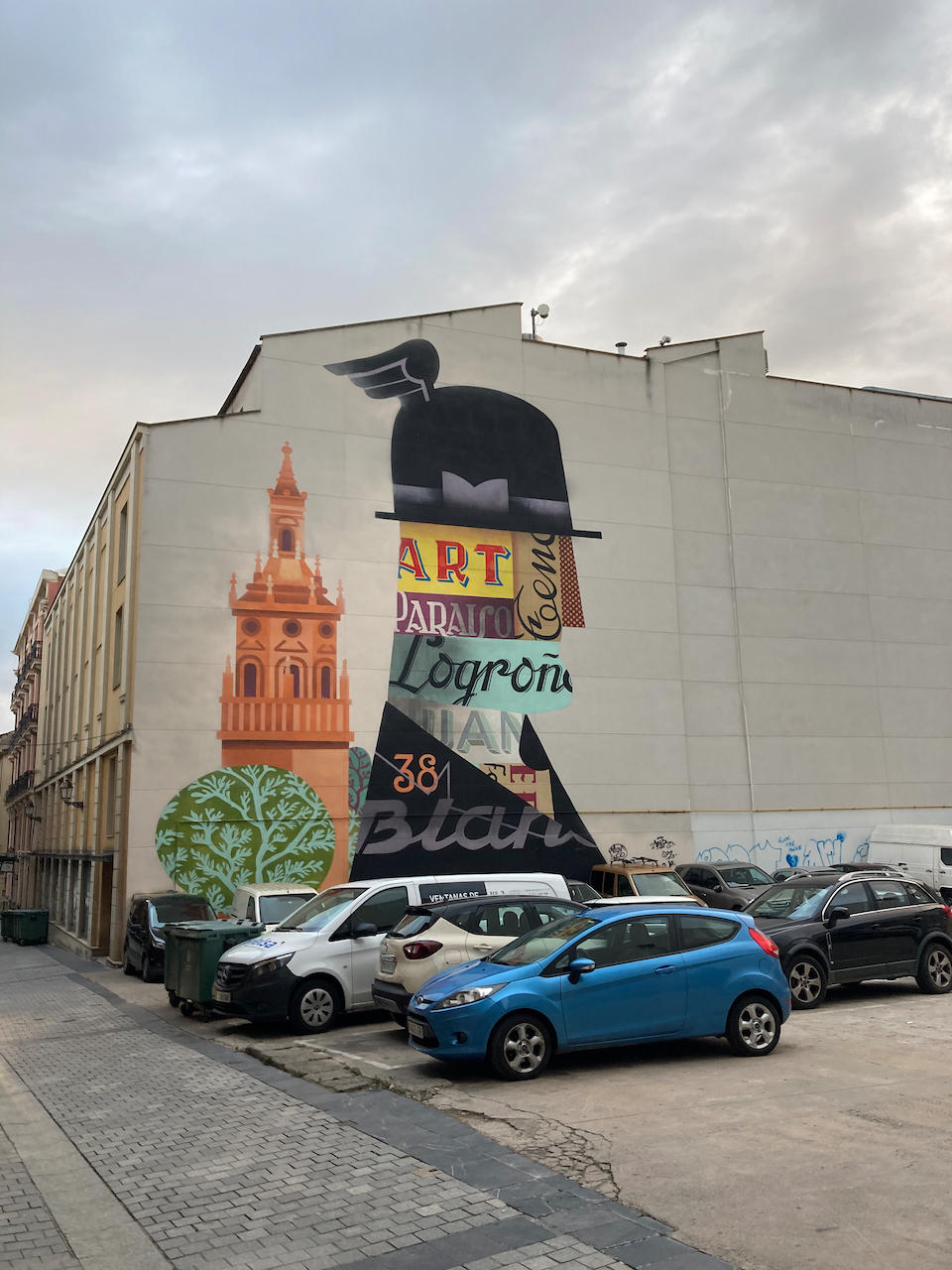There are four officially allowed transport options on the Camino: on foot, bicycle, horse and a sailboat. You can’t sail on Camino Frances. We haven’t seen any pilgrim on a horse, but there were definitely some horse trails available. Speaking of animals, Camino can be a very satisfactory idea for daily walks with your dog. Smaller dogs seemed to be accustomed to a certain standard of transport and barely left their purse even on the Camino.
If your luggage is too heavy for some reason, you can get it transported by car to your next accommodation for 7 € per day. If this option seems boring, there is always a room for innovation. An Italian olive oil trader Roberto decided to buy a small cart, the same as people use for food shopping. The wheels lasted for 2 days. Someone still needs to come up with a hiking version of this vehicle.
Camino equipment can fail at any point of the journey. People leave clothes, shoes or broken poles behind, and not always in a trash. Juan’s new backpack had a few broken stitches on a strap since the beginning. The only way to get it fixed was to send it back to the manufacturer. Juan was avoiding this ticking bomb simply by not loading the strap as much as before.

Wool tights and shorts were a wonderful outfit for rainy days. My own heat dried the wool very fast and I felt very flexible compared to wearing pants. Unfortunately, a female body is not always very well designed and likes to accummulate fat on one particular spot on thighs. Doesn’t matter how skinny is the rest of my body, my legs always rub against each other. I was ready for this inconvenience – I planned to use the runner’s lube once the weather was warm enough for shorts. The question that I didn’t ask myself should have been: “What happens to wool if you rub it 100,000 times?” As you probably guessed, after a week of walking I started feeling a draft between my legs.
A true engineer with a duct tape can never be surprised by any mechanical problem. All I needed was a good patch. I used our blister patch for the inner part and sealed it with a duct tape from the outside. Such an elegant solution! I considered stitching the patch as well, but first I was excited to perform a fatigue testing. It worked perfectly for a few days, it even repelled water! Once the occasional rain showers turned into waterfalls, my patch simply fell off.
As we reached Logroño, I reached the limits of my patience. I could see the tights falling into pieces with every step. The decision was made – we would use the rest day for shopping. After an unpleasant hiking store with fake Chinese brands we rather took a long walk to the outskirts of the town to Decathlon. Camino trail goes by, so convenient! I managed to find new tights and amazing hiking pants on sale.
Shopping is pretty tiring and we agreed to rest for the rest of the day. We skipped the walk back to the center and took a bus. After two weeks of walking a simple bus ride felt like a trip to the future. The entire Camino is a 8-9 hour drive. I completely redefined what’s a walking distance in my mind. We asked ourselves: “Is taking the bus cheating?” The answer was no. We would walk the same route on the following day.

We returned to the cathedral square which was full of pilgrims. Some of them we passed before and they seemed pretty injured, so it was a surprise to meet them. One of them was an Irish girl Nora, who never tried to hide her passion for alcohol.
We used to think that majority of pilgrims have spiritual reasons to walk. It’s true, but many of them literally like walking because of cheap spirits.
We met Nora during the first night in Orisson. She worked for a charity organization and managed to get a month off for the Camino. Her goal was to lose weight from the pandemic and enjoy her vacation. We had never seen her carrying her big backpack, but she seemed to have many different outfits. None of them really suitable for hiking. She asked us where to buy a good poncho. She often started drinking before dinner and didn’t think about food until the kitchen closed. When we met her in Logroño, she blamed her American companion for getting her drunk. Her backpack was 10 km away and she was not capable of walking there. She planned to take a taxi anyway. This wasn’t her first taxi ride on the Camino. Taxi always brought her to a private hotel room around the same time as other pilgrims arrived. Charity workers in London seem pretty rich!
Nora’s friend from Dallas wore heavy army boots. We asked him about blisters. He had had a lot the previous year, he had a lot on this Camino. But, according to his words, he was used to them already. When we shared our excitement from today’s bus ride, the Dallas guy confessed that he had been taking many buses on the Camino to avoid foot pain. Makes me wonder: is it cheaper to take buses than to buy different shoes?
Nora was a very social person and knew almost everyone on the Camino. She and her friend were certainly not the only pilgrims who preferred the modern ways of transport. She completely shattered our illusion. Many people can’t handle the discomfort of old-fashioned walking. Juan and I invented a new description for modern pilgrims (peregrinos) – it’s more appropriate to call them “taxigrinos” and “busgrinos”. Once we also met two women with a support van who brings them food and moves them to easier sections of the Camino. When National Geographic made a documentary about the Camino, the crew was pure “vangrinos”. Comfortable souls can do the entire Camino adventure in the car. No wonder I found a specialized guidebook entitled “Los Caminos de Santiago en coche (car)”.


Leave a Reply